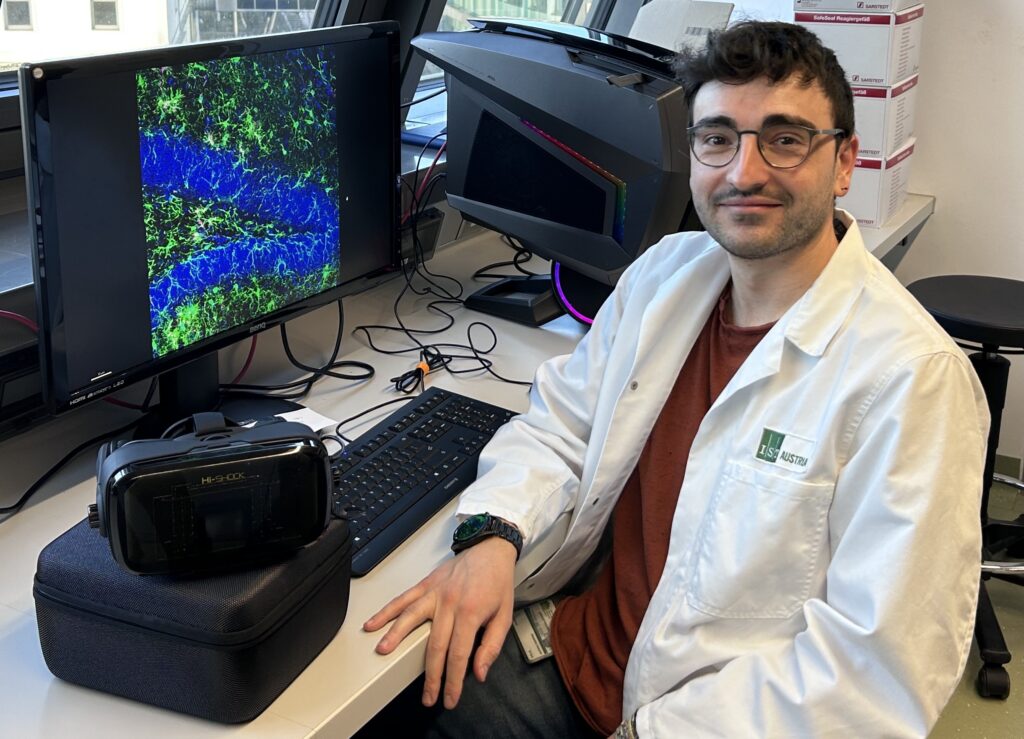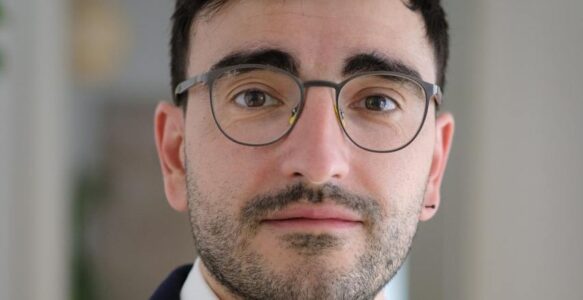Alessandro Venturino
Co-founder and Head of Research
At Syntropic, he spearheads research advancements, drawing on his extensive experience in Neurophysiology.
He studied Biomedicine at the University of Pavia (Italy) and obtained a Ph.D. in Cellular and Molecular Neurophysiology working on the role of microglia in the central auditory pathway. He then moved to the Institute of Science and Technology Austria (ISTA), in the group of Prof. Siegert as a research scientist. At ISTA, Alessandro advanced his research in Prof. Siegert’s group, using imaging and electrophysiology to study microglia-neuron interactions in healthy and pathological conditions. He further expanded his expertise through international experiences as a visiting scientist at Femtonics (Budapest) and MIT (Cambridge, USA).

“I first became fascinated by the brain as a kid when I read a book about the Egyptians. They described how they could remove the brain, and I was amazed. I always wondered how that was even possible”.
Since his years at the University of Pavia in Italy, Alessandro has focused on the study of the brain, particularly from an electrical perspective. His interests lay in neurophysiology — the physics of neurons, how they fire in response to stimuli, and how other cells, which cannot generate action potentials themselves, can nonetheless affect neuronal firing properties by restructuring the surrounding environment.
In particular, his specialty has always been microglia, before in his PhD at the University of Pavia, and later as a Research Scientist in the group of Prof. Sandra Siegert at the Institute of Science and Technology Austria (ISTA). Alessandro was also a visiting scientist at the Massachusetts Institute of Technology in Prof. Mark Bear’s lab, where he furthered his research on changes to the visual cortex of mice after ketamine treatment.
However, it was in Siegert’s Lab at ISTA, where he found out that 60-Hz light stimulation activates microglia to remodel perineuronal nets (PNNs)—structures that coat certain neurons and restrict the brain’s ability to change and adapt with age.
“Through light stimulation we can remodel PNNs, promoting a juvenile-like neuroplasticity state”, specifies Venturino. “It is similar to the results observed with ketamine, but without all the side effects of a drug”.
This enhanced flexibility has been associated with improvements in learning, memory, cognition, and social interaction in animal models of depression, with potential for similar outcomes in humans.
It was at this point that Alessandro’s entrepreneurial mindset, shaped by his roots in an Italian city known for its business spirit, encouraged him to take the leap. ISTA’s structure, designed to translate discoveries into practical applications, provided the perfect environment for turning his vision into reality.
“The start-up world is incredibly dynamic”, continues the neuroscientist. “It often takes years of experiments, but once you have the technology ready for translation, you can establish a company and, within a year, have a prototype and a research study on humans”.
The founders of Syntropic perfectly understood the importance of speed.
They have been highly skilled at securing funding and obtaining grants quickly, which significantly accelerated Syntropic’s initial phases.
“It happens just a few times, that something developed in the lab can potentially have an application in the clinic. We have to do our best to make it happen”. Alessandro already managed to convince highly-qualified professionals to get onboard. All the promises are there.
Want to connect with Alessandro?
Feel free to reach out at info@syntropicmedical.com.

